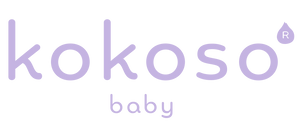
Tips For Cradle Cap
In this blog post, we answer some of the most common questions about cradle cap. But firstly, we'd like to reassure you that if your baby has developed those tell-tale scales, flakes or crust, there’s no need to worry. Babies with cradle cap (or seborrheic dermatitis) are usually well in themselves and the condition should get better on its own or with treatment.
What is cradle cap?
According to the NHS, cradle cap is a harmless skin condition that's common in babies. It affects around two thirds of little ones - and the good news is, it isn’t painful. However, lots of parents still want to know how to treat cradle cap in a way that's both gentle and natural.

What does cradle cap look like?
The symptoms of cradle cap are yellow, crusty or oily, scaly or rough patches on a baby or toddler’s scalp. It might look uncomfortable or irritating to the skin, but it usually isn't itchy and doesn't seem to bother little ones.
Where does cradle cap appear?
Cradle cap can show up:
- on the scalp
- on the forehead and face
- behind the ears
What is the cause of cradle cap?
It is thought to be linked to excess sebum from the sebaceous glands, which can be very active in babies causing greasy areas on baby’s scalp that accumulate dead skin cells. These cells can form small crusty patches on the scalp.
Rest assured, cradle cap is not caused by poor hygiene, it is not an allergy, it is not dangerous and it is not contagious.
Do you treat cradle cap or leave it?
This is completely up to you. The NHS website states that cradle cap usually clears up on its own, but they also point out that there are things you can try at home to make it better.
How do you get rid of cradle cap?
When it comes to how to remove cradle cap, the NHS recommends washing your baby's hair with a mild unfragranced baby shampoo and using a baby oil or vegetable oil to gently massage and soften the cradle cap crust.
The NHS also states that you can use a baby oil as an overnight treatment, before washing baby's hair in the morning. You can also use a soft bristled baby brush to massage baby's scalp and loosen the flakes that the oil has softened overnight.
Can you pick cradle cap?
No! Whilst the condition itself isn't painful, picking cradle cap can be painful for your little one – so please don't do it, however tempting it may be. Picking at it is 100% not how to heal cradle cap. As well as causing your little one pain, it exposes sore skin underneath the scales that can become infected.
Will my baby lose their hair if they have cradle cap?
It’s often the case that baby’s delicate hairs become matted through the scales and therefore come away with the scales. However, this is nothing to worry about and the hair will grow back without a problem.
Can you put lotion on cradle cap?
This depends what kind of lotion it is. We would recommend using a lotion that is formulated specifically for the scalp.


